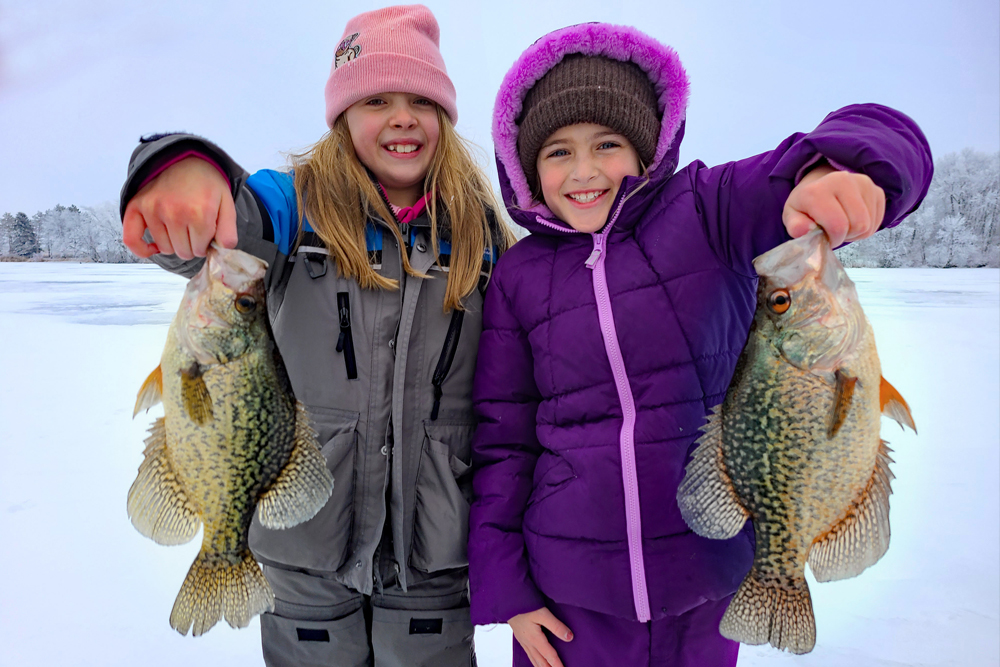(l-r) Quinn Mackenthun and Haley Walser with a pair of slab crappie destined for fish printing. (Photo: Scott MacKenthun)
Gyotaku – Paint and Release
by Scott MacKenthun and Richard Simms
Forget Your iPhone – Try Gyotaku
There is tremendous overlap in the beautiful worlds of art and angling and fish printing is the centermost intersection of the two. Fish printing is called gyotaku by the Japanese and began in the mid-19th century. Gyotaku was a way for fishermen to record their catches and may very well be the precursor to modern taxidermy and trophy fish photography.
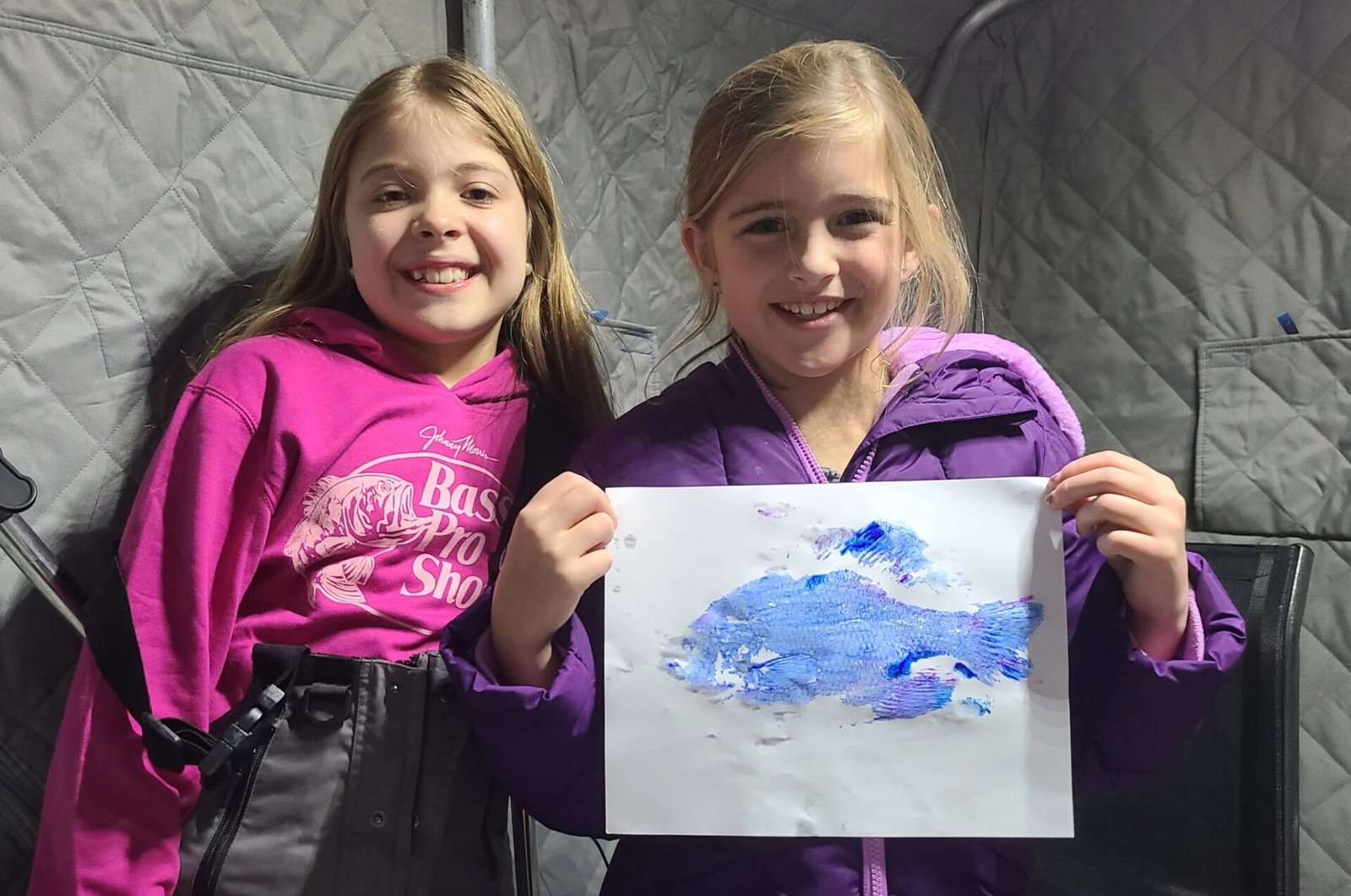
Long ago these Japanese anglers documenting their largest, most unique, or memorable catches on fishing excursions. Their beautiful gyotaku prints adorned their homes and offered subtle bragging rights in a culture known for modesty and honor.
Gyotaku artists use a variety of mediums, from direct paint or ink or in some cases using a facsimile that can then be transferred to hard stone or wood. The resulting images are remarkable; crisp details include scales, spine alignments, fin and ray positions, heads, eyes, and gill covers all project the wonderful and familiar shapes and patterns known to anglers and fish enthusiasts.
Part of the gyotaku artistic experience is enjoying familiarity with the fish, an admiration that comes in seeing the fish’s natural beauty and recognizing the form and function of their variable taxonomic differences. While most anglers will create fish prints from fish they have dispatched and plan to cook and eat, you can also print fish and release them under the right circumstances and while working quickly. As my elementary age daughter Quinn falls deeper in love with art and painting, I used the opportunity to practice gyotaku as a chance to get her and her friend and aspiring angler Haley out fishing.
“I do think fish are one of the most beautiful things on this planet.” ~ Matt Monahan, Gyotaku Artist
We set up our ice shack on the edge of a drop off where crappies had been gathering in the late afternoon. For about 90 minutes, we had spurts of amazing crappie fishing, triggering fish with small jigs baited with Eurolarvae spikes and jigging spoons with crappie minnow heads. The pods of black crappie would fight their way up to the baits as they fell, and the girls needed to simply trigger the bite and set the hook.
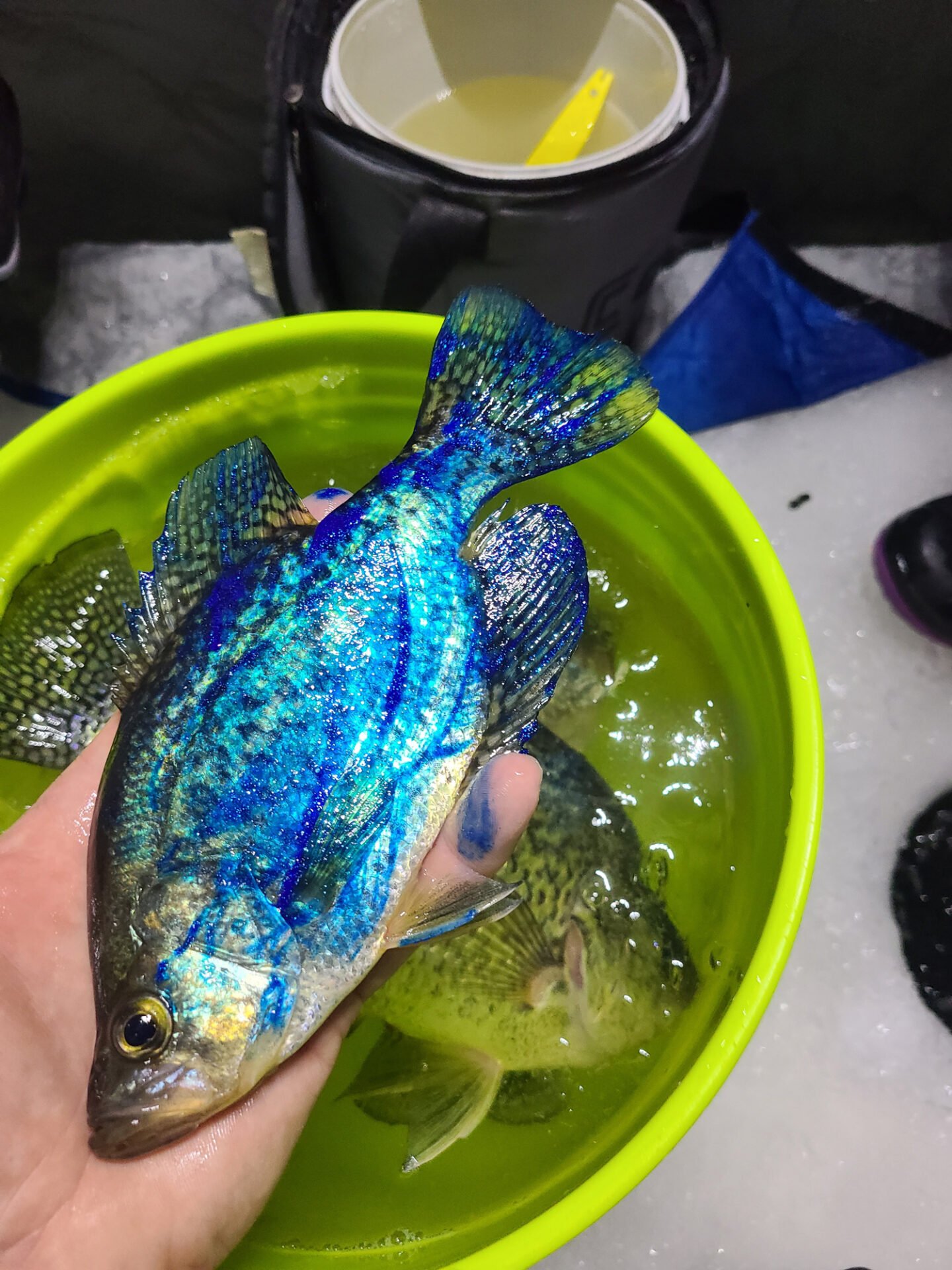
By sundown, we prepared to try our hands at gyotaku with a couple of fish kept in a 6-gallon bucket as a live well. We brought paint brushes and paper and made sure to bring nontoxic washable paint so we wouldn’t be hurting the fish or the lake with each paint-and-release. Winter crappie have slower metabolism and coupled with working inside the warm fish house, our longer than normal handling time would not put the crappie in any vulnerable recovery positions.
We moved quickly to get our fish printed. I held the crappie for Quinn and Haley, blotting up excess water with a dry terry cloth towel. I worked carefully to not rub on the fish’s body surface, which would remove the slime coat that is important to the fish’s health as it protects against bacterial and fungal infection.
The girls worked quickly to apply paint, in 15-30 seconds, covering all the fins, head and tail and entire body. Then one of the girls would lay the paper over the fish and both girls would gently blot the paper on the fish, being careful not to move the paper and disturb the imprint.
Finally, we would pull the paper off and release the fish down the ice hole, watching a tail kick and some residual paint sliding off as the fish swam away. Eventually, we had an effective system down in working together; we found that thin paper worked better than heavier stock paper because it was easier to wrap and contour the fish. It was also critical to cover the entire body of the fish with paint in moderate coverage. Too little paint and you had light spots in your print. Too much paint and you lost resolution and the edging detail was not sharp.
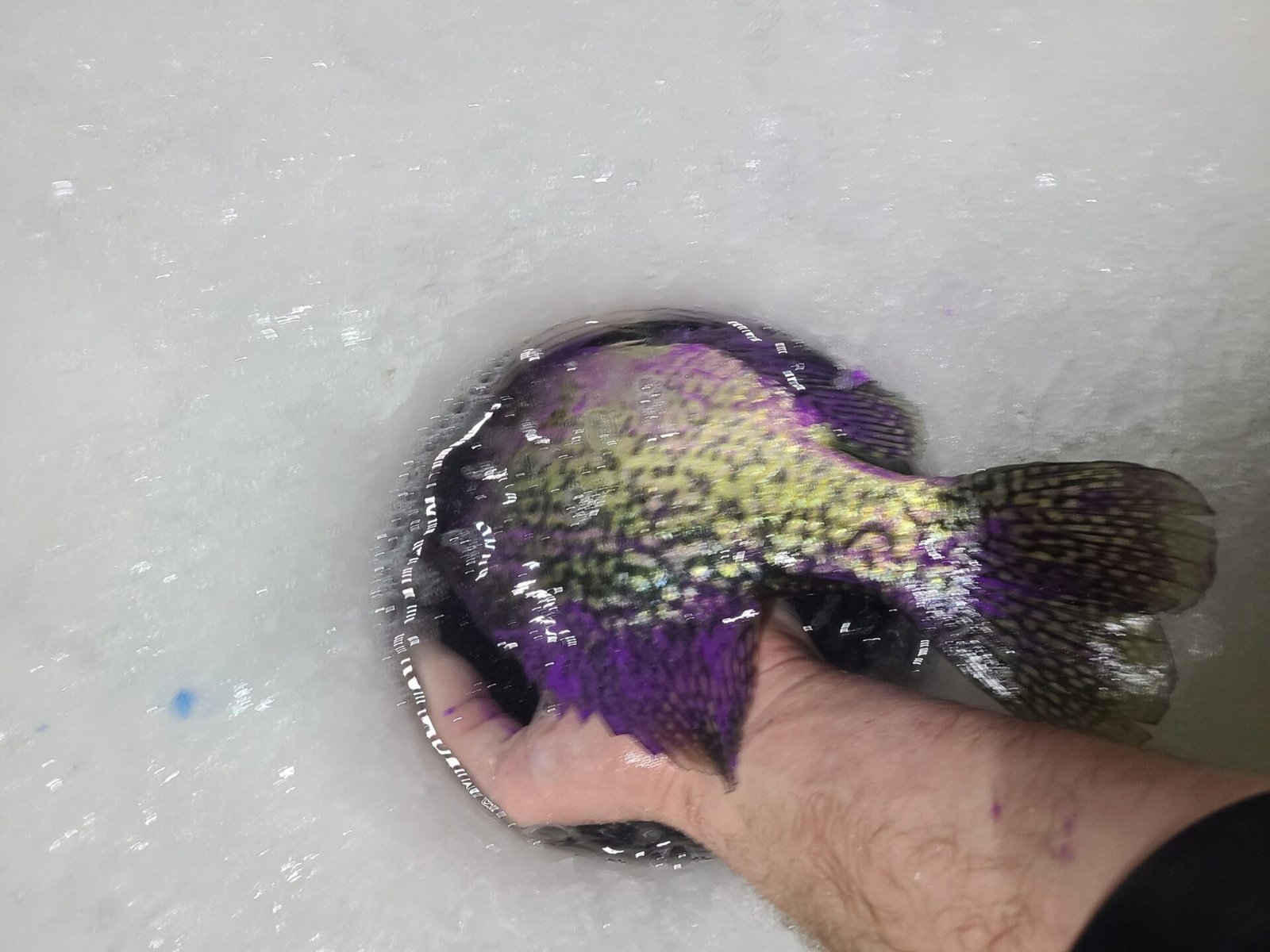
Our crappie fishing proved to be memorable for the girls and our gyotaku prints were a token for us to remember that evening for the future.
On the other hand, Matt Monahan from Chattanooga, Tennessee is a gyotaku expert, creating and selling his fish art across the country. However, as a teacher, Monahan also shares his passion for gyotaku with his students.
He is an avid angler but with five kids of his own, Monahan said he doesn’t get the chance to fish as much as he’d like, so gyotaku helps fill the void.
While Monahan is simply creating a replica print of a real fish, watching him meticulously prepare the fish, delicately apply oil-based paint in just the right color combination and then gently paint the perfect “eyeball,” it’s easy to see “the art” in this rare form of artistry.
Click Here To View Video
Monahan sells his gyotaku artwork routinely and occasionally does “commissioned” work for avid anglers.
Monahan’s moniker is “The Might Bluegill,” his favorite fish.
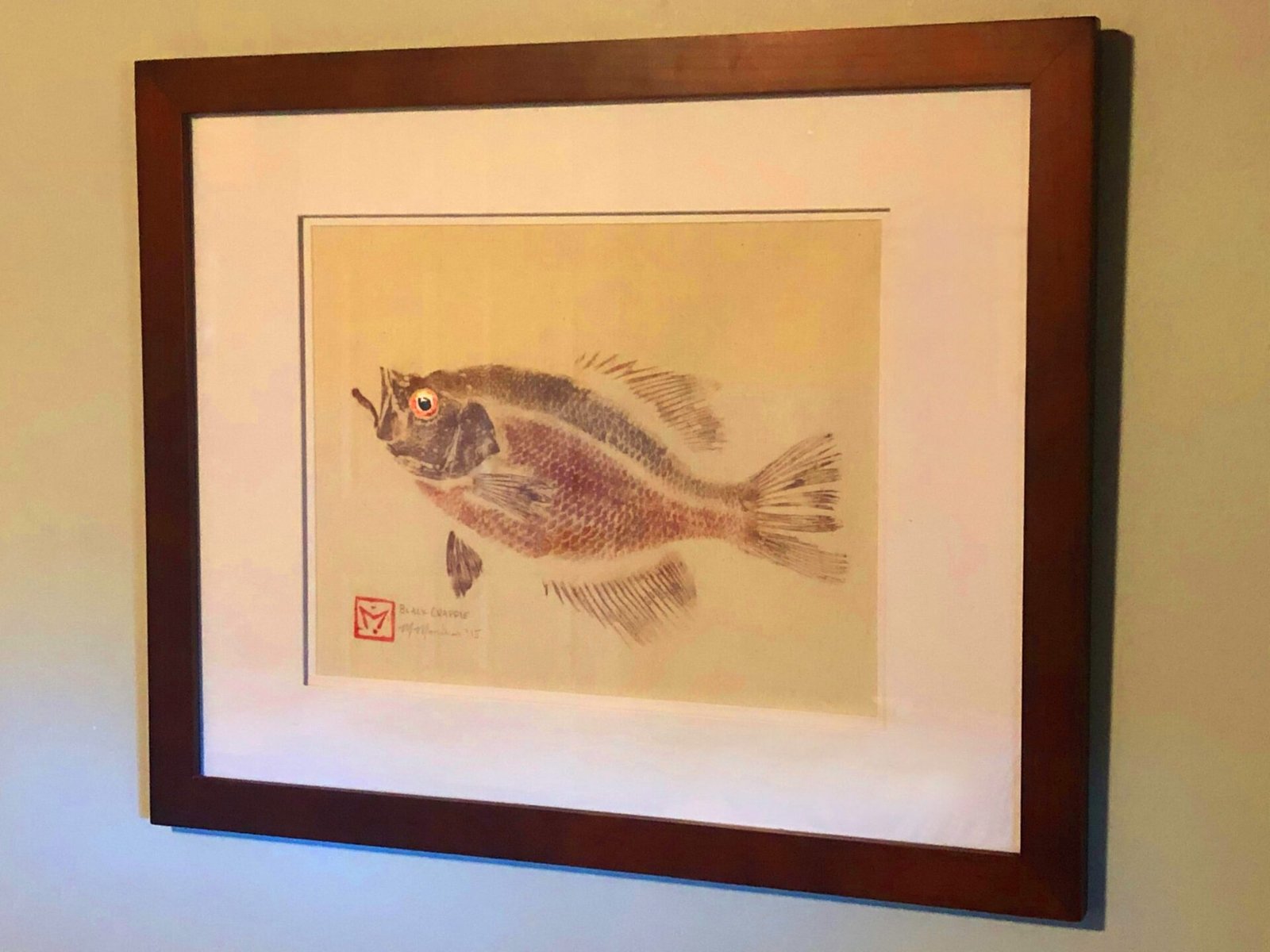
“They’re one of the tiniest game fish, but pound-for-pound, they’re one of the mightiest fish out there,” he said.
Watching and listening to this artist at work, it is easy to see, and hear, his passion. He said since he was a child, he would catch a fish and then just sit and stare at it.
“I do think fish are one of the most beautiful things on this planet. The pearlescent colors that look almost three dimensional, and their eyes … sometimes it can just look like a universe unto itself, he said.”
So, whether you are a weekend hobbyist or a professional artist, gyotaku might be a new and novel way to share your fishing passion with others.


